In what is a super positive step for red handfish conservation, we'd like to introduce you to a new PhD student at the Institute for Marine and Antarctic Studies at the University of Tasmania, Tyson Bessell! Tyson is already familiar with handfish - having worked on spotted handfish for his Honours project.
Tell us a bit about yourself, Tyson!
I was born and grew up in Hobart, going to school at St Virgil’s College until year 10, when I moved to Guilford Young College. At GYC, I studied many different subjects, with my favourites being marine and environmental sciences. I graduated from year 12 in 2014, and continued on with my education straight away, enrolling in a Bachelor of Marine and Antarctic Science, which I completed in 2017. Immediately after that, I completed my Honours in 2018. Just to continue the pattern of ongoing education and learning, I began my PhD project this year [2019].
My interest in marine life is a little clichéd; when I was five years old, my parents took me to Sea World on the Gold Coast for a family holiday. While I was there, I remember going to see a 4D movie (I can’t really remember what it was about). In the movie, I remember watching a beautiful green turtle swallow a plastic bag and choke. Obviously, as I was only a 5-year-old, this was very traumatic for me, and I spent the rest of the day balling my eyes out! But that was the moment that sparked my interest for marine conservation – from that day on, I wanted to be a marine biologist when I grew up.
Tell us about your Honours project:
For my Honours project, I was lucky enough to dive regularly around the Derwent River, photographing every spotted handfish I saw. I then used a computer program to help me identify different fish in those photos, which allowed me to track them through time. I did that by using their spots – in the same way we all have unique fingerprints, spotted handfish have unique spot patterns. This meant that I could measure how much the fish grew though time, how much they moved, and how long they could live for.
I found that there wasn’t very much movement in the few fish we managed to see on more than one occasion. One fish moved over 500 m in 3 years, while another fish only moved 50 m in 1 years. I also found that spotted handfish could change colours slightly. We think this might be a camouflage response, to try blend in with their surroundings as much as possible, but we aren’t quite sure just yet. I also found that spotted handfish might be able to live for up to 10 years.
Why handfish – have you always been interested in fish/conservation?
Like I said earlier, I’ve always been pretty passionate about marine conservation (those poor turtles!). Because handfish are endemic to Tasmania, I want to do my part as a born and bred Tasmanian to better their situation, and hopefully see all the endangered species of handfish recover over time. I also must admit, it’s pretty cool to be able to work with some of the rarest fishes in the world!
Tell us about the components of your PhD project, and what you hope to find/do with your findings:
When the opportunity came along to work with one of the rarest fishes in the world, I jumped right at it (in fact, I started a few months early!). My PhD project aims to reveal the ecology and biology of the red handfish, and how we might better conserve the species. My project is broken up into a few different components. First, I hope to provide the world’s first population estimate of red handfish. I’ll also be gathering information on movement, growth and habitat preference. Second, I’ll be exploring what makes for a successful captive breeding conservation program for marine fish, which may then be applied to red handfish (and potentially other species of handfish too). And third, using a genetic approach known as eDNA, I hope to trial a technique that will help us find new populations of handfish without needing to have SCUBA divers scour the apparently never-ending Tasmanian coast.
I hope that my project will work towards better conservation of handfish, particularly of the red handfish. There are so few fish left in the wild that urgent intervention is required to make sure the species doesn’t go extinct. If my work can help in the prevention of a species’ extinction, then I’ll feel accomplished, and lucky to have been a part of that story.
They say parents never have favourite children, but if you HAD to choose a favourite handfish species…(which would it be):
I think my favourite handfish has to be the red handfish. Seeing them in person for the first time felt like finding buried treasure. They are such a small, cute (and yet always grumpy) fish, and I think that’s what I like the most about them.
Wishing Tyson all the best - and we'll keep everyone updated with how his project is coming along.
Some of Tyson's work:
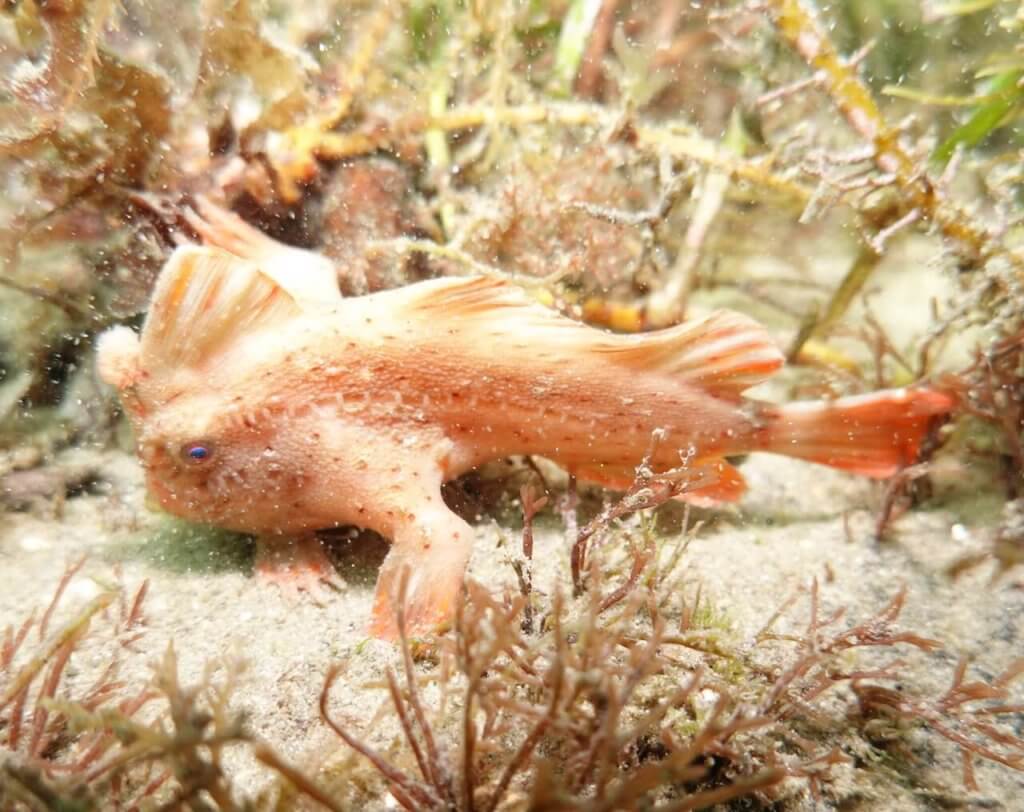
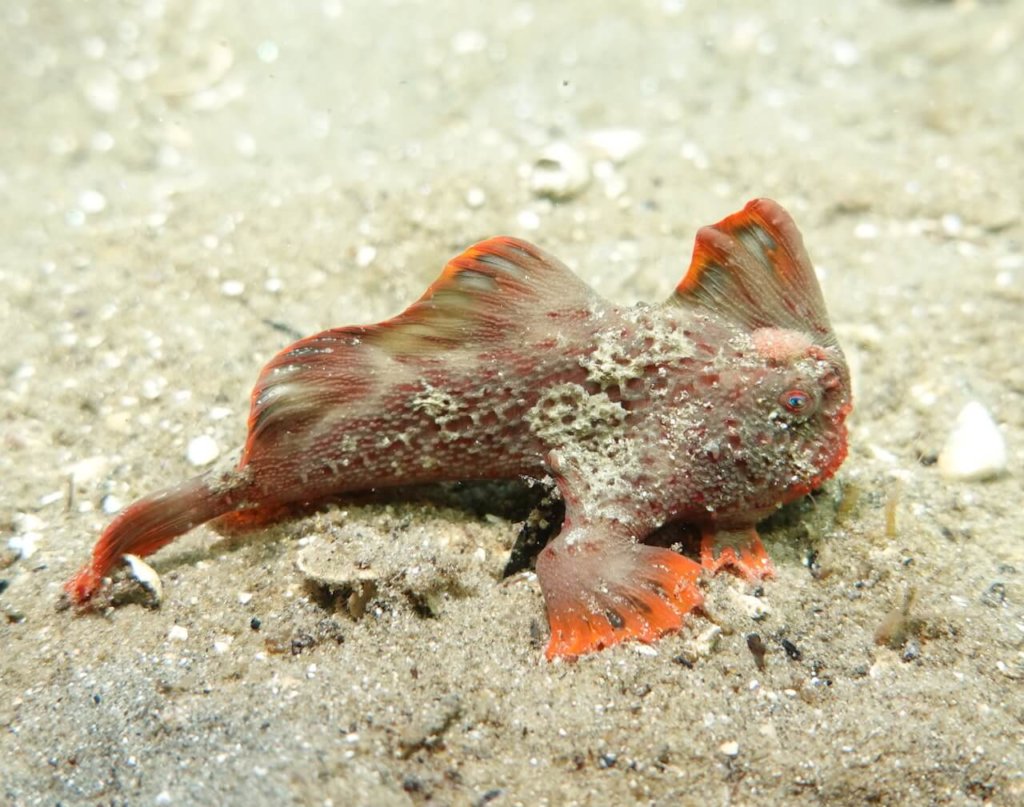
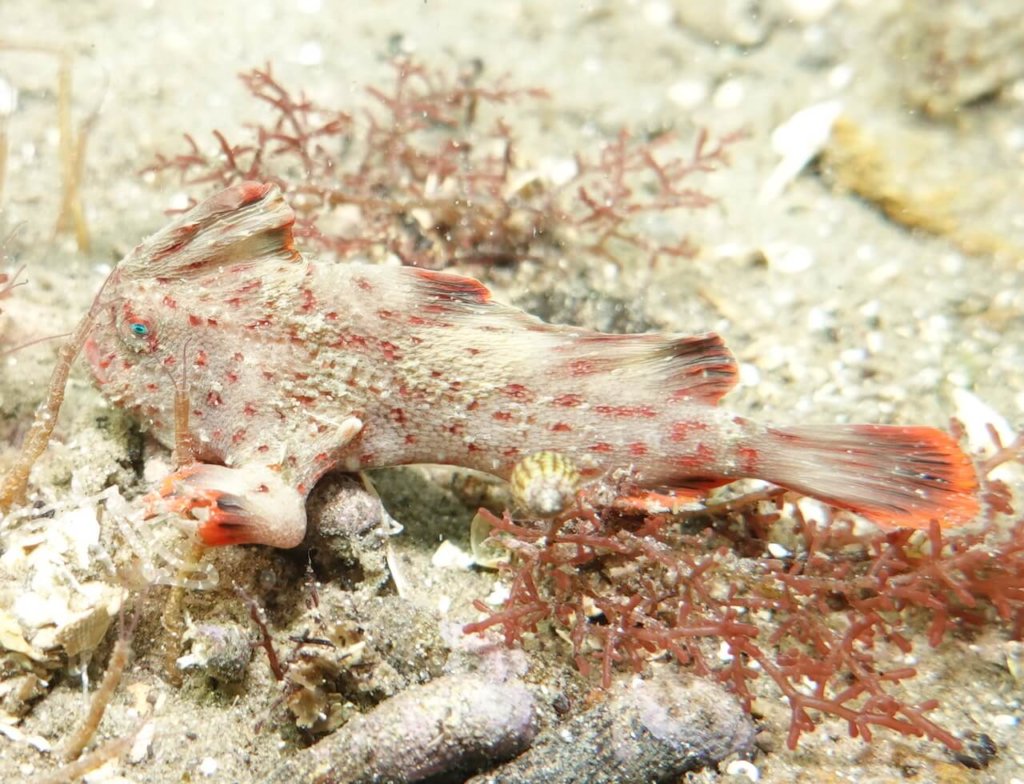
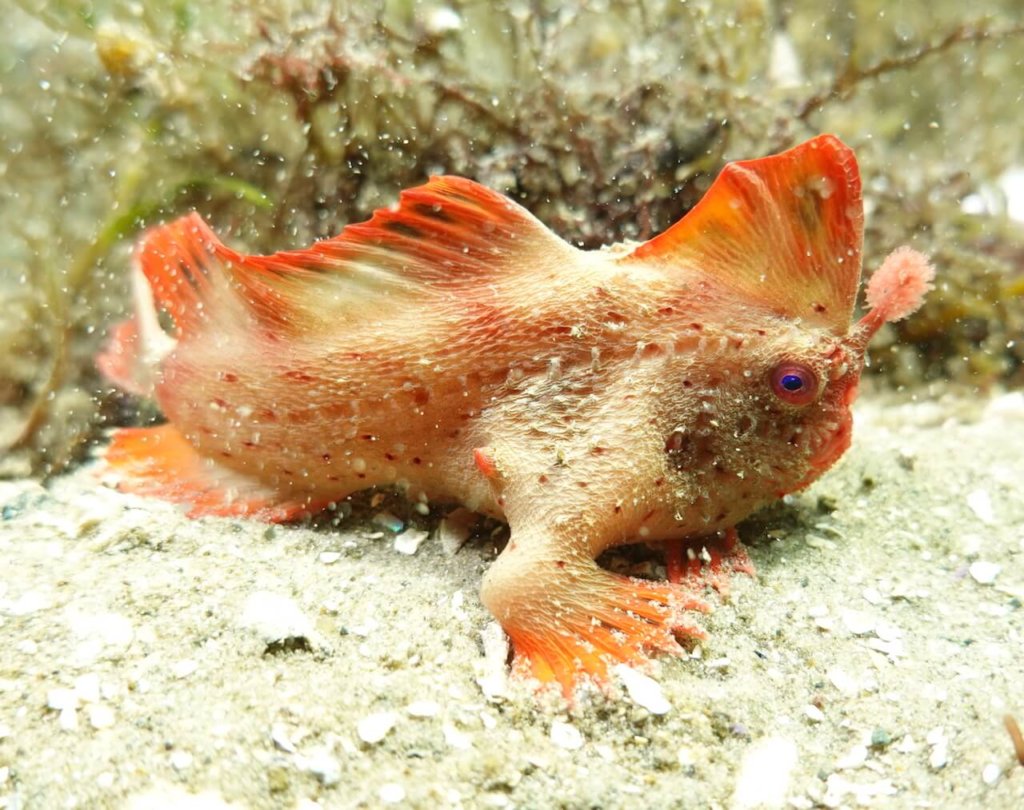
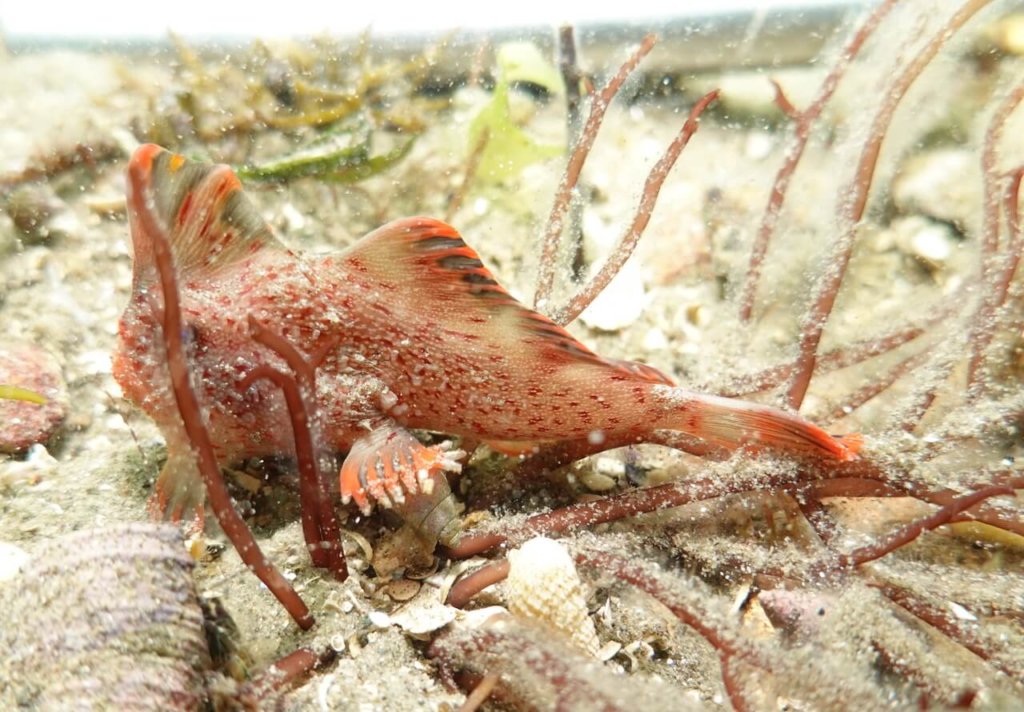
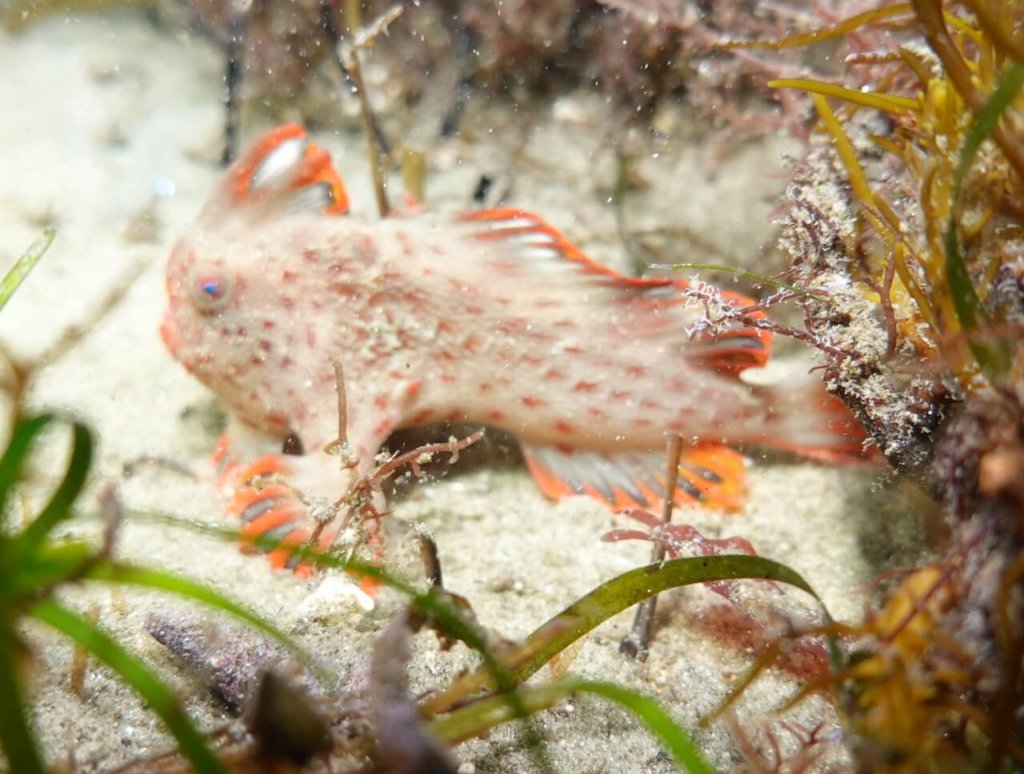
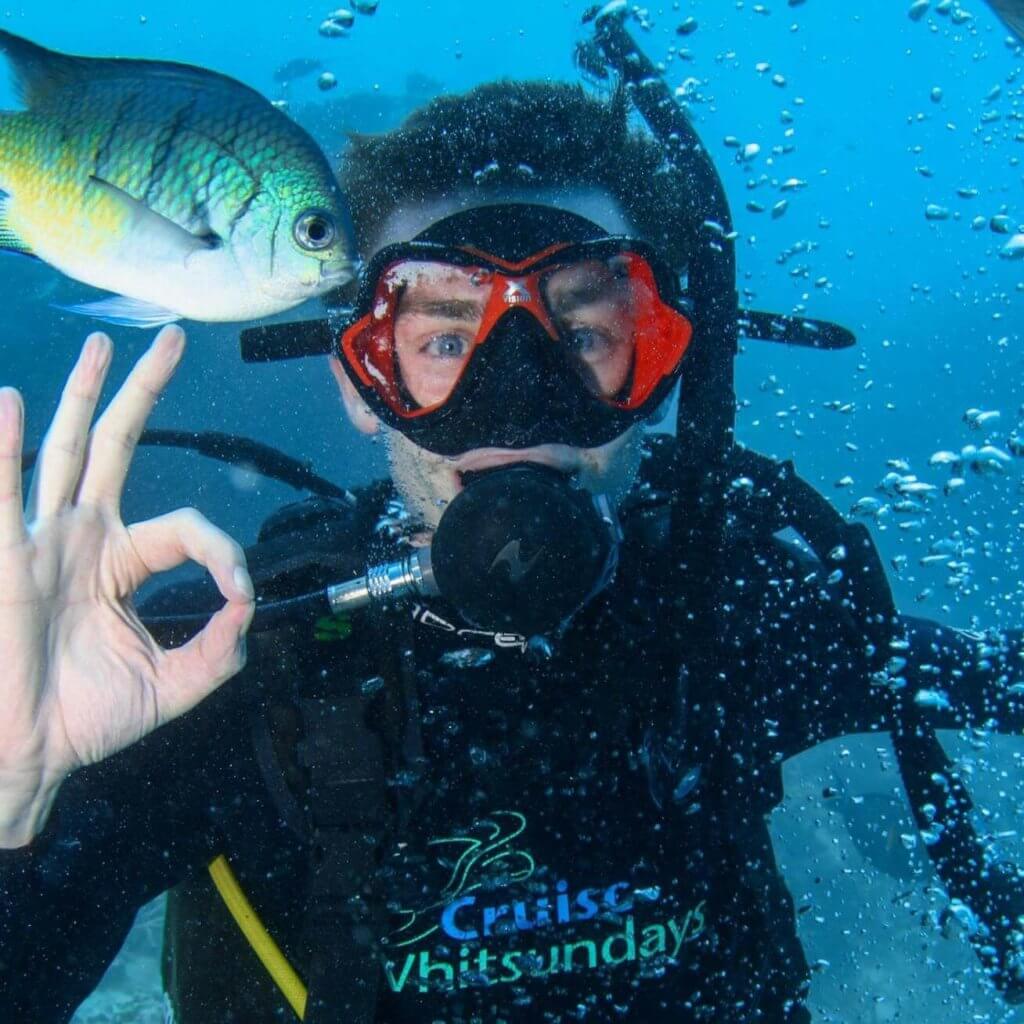
Images are courtesy of Tyson Bessell and represent some of the red handfish observed in his first field season.